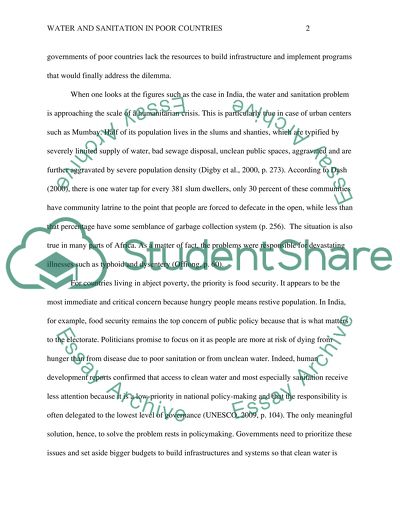Critical issue in global health ( water and sanitation in poor Essay. Retrieved from https://studentshare.org/environmental-studies/1667824-critical-issue-in-global-health-water-and-sanitation-in-poor-countries
Critical Issue in Global Health ( Water and Sanitation in Poor Essay. https://studentshare.org/environmental-studies/1667824-critical-issue-in-global-health-water-and-sanitation-in-poor-countries.


